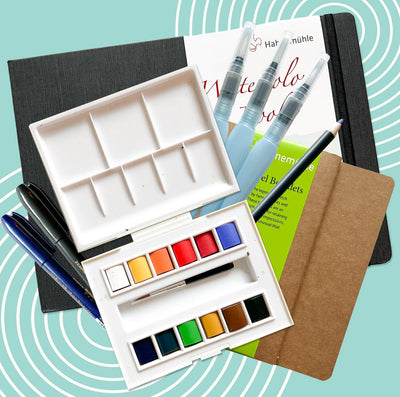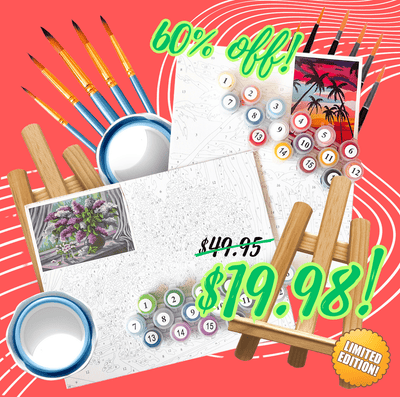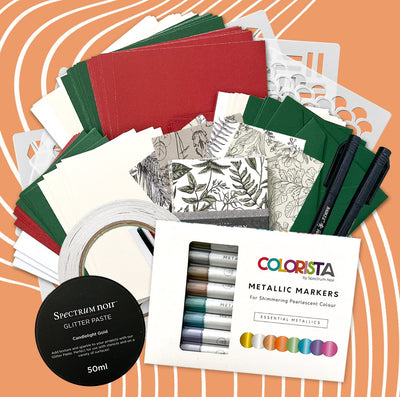Your June Smart Art Box features all the ingredients you need to become trained in the time-honored fresco technique!
A fresco is a mural painting process in which painting becomes an integral part of the wall (or surface). The technique most frequently associated to fresco painting is “buon” or “true fresco,” which applies pigments mixed with water to a layer of wet, fresh lime mortar or plaster.
All this talk of the frescoes had us wondering what the contemporary art version of this ancient technique would be…
So we bring you…
10 of our favorite Graffiti / Street Artists!!
Graffiti is also an ancient art, and basically consists of writing or illustrations on a wall or other public surface. In modern times, street artists’ medium of choice has often been spray paint. But graffiti can no longer be contained to the aerosol can, as it’s become a rich and varied art form, complete with its own strands, schools and methods, with complex underlying (sub)cultural, social and political meanings.
The stencil-based work of Nick Walker. Photo: Visual Hunt
1. Nick Walker
Walker introduced stencil graffiti to the Bristol graffiti scene in the early 1980s. His work combines stencil images with freehand realistic renderings, a contrast that often results in ironic dystopian imagery. You’ll be able to identify his painting if you spot his signature character, a bowler-hatted gentleman with a concealed face.
The work of Stinkfish for the Djerbahood project in Columbia. Photo: Visual Hunt
2. Stinkfish
A founding member of APC crew and a key player in the Columbian street art world, Stinkfish is known for colorful stencil-based portraiture (although he also works with rollers, wheat-pastes and stickers). His work is community focused, and depicts the faces who grace the local streets.
The work of Roa. Photo: Visual Hunt
3. Roa
Roa’s large-scale murals depict the life and decomposition process of various animals, in black, white and red predominantly. Hailing from Holland, Roa’s work takes into account the architecture and animals who are native to his location of choice. It also sometimes incorporates found objects and is interactive in nature.
The work of Cekis, Laguna and Cern in Greenpoint. Photo: The Street Spot
4. Cekis
Cekis helped pave the way for a vibrant street art scene in his native Chile. His work recalls traditional muralism drawing heavily on populism and social realism.
Blue in Berlin. Photo: Visual Hunt
5. Blu
From Bologna, Italy, Blu is known for his bold, large-scale paintings that use few colors. His work has sparked controversy, and has undertones of political activism, often speaking to war and capitalism.
The work of Blek le Rat. Photo: Visual Hunt
6. Blek le Rat
When he began in 1981, he was the only artist painting stenciled black rats on the streets of Paris, and soon they were everywhere, heightening locals’ engagement with the city.
Barry McGee mural in Brooklyn. Photo: Visual Hunt
7. Barry McGee
American artist McGee rose from the street art milieu of the 1990s to become a big player in the world of contemporary art, even making his way to the Venice Biennale. Early on, he helped forge links between the American and Brazilian graffiti art scenes.
Ron English mural. Photo: Visual Hunt
8. Ron English
In early 1980s, English was a key protagonist in the art of the “Ad takeover.” That is, he pasted satirical works over billboard ads targeting corporations such as McDonalds, Camel cigarettes and Disney to subvert accepted ideas on brands. His more recent work has changed directions, and a notable piece depicts a merger of Barack Obama and Abraham Lincoln.
Graffiti by Banksy. Photo: Visual Hunt
9. Banksy
World renowned today, the identity of this British artist still remains unknown. This mystery perhaps adds to the power of the voice of this artist and political activist, whose bold satirical street art serves as critiques of capitalism and social hypocrisy. His stencil-based renderings often picture the royal family and other British personas, rats, apes and children.
Keith Haring wall mural, Pisa. Photo: Visual Hunt
10. Keith Haring
Our top ten pick for our favorite graffiti artist is an American icon who is no longer with us. Before he died prematurely at the age of 32, Haring’s bold cartoons could be found throughout the New York art scene in the 1980s, from imagery on empty billboards in subway stations to clothing.


